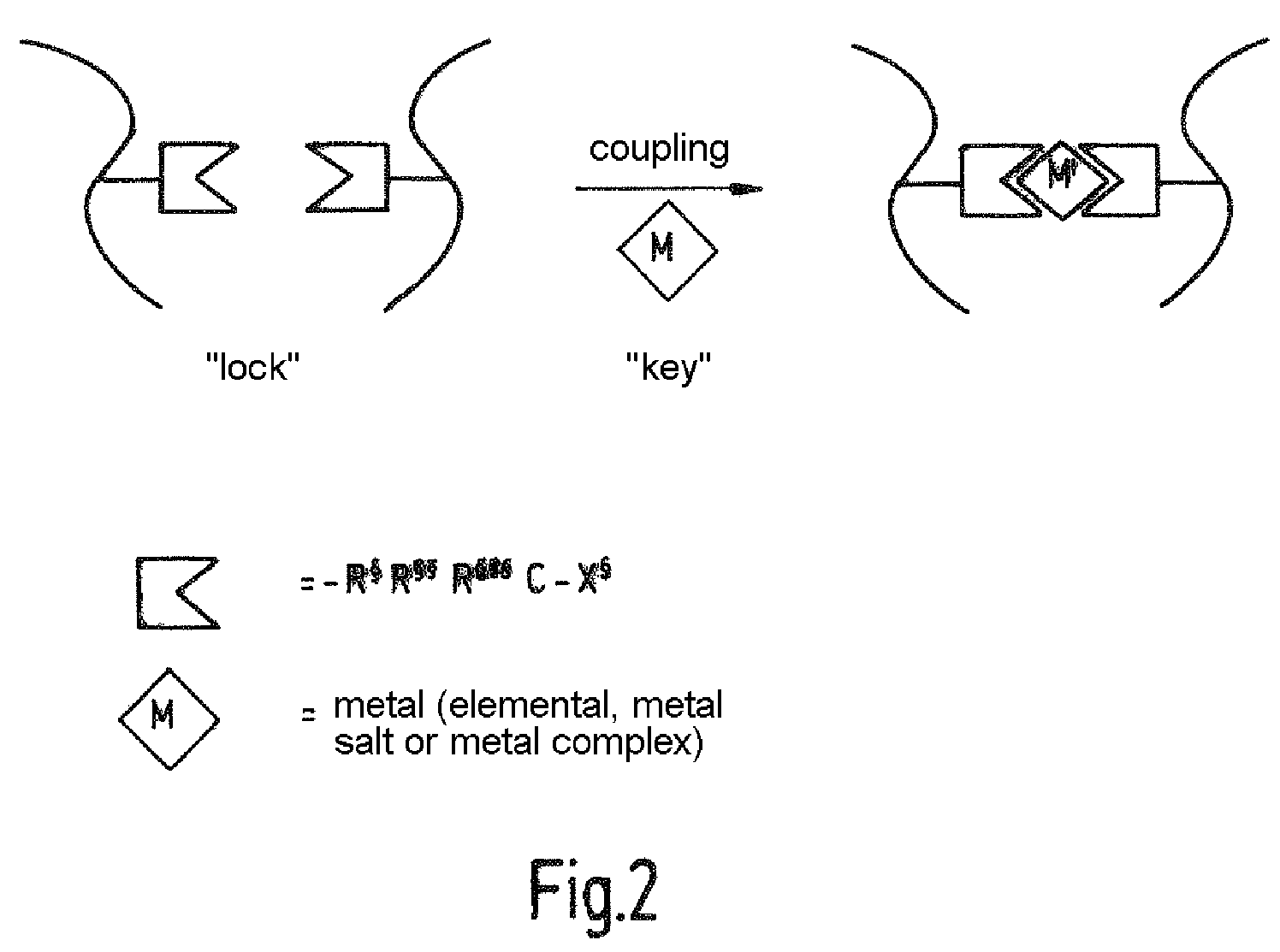Method for producing contact adhesive masses containing acrylic
- Summary
- Abstract
- Description
- Claims
- Application Information
AI Technical Summary
Benefits of technology
Problems solved by technology
Method used
Image
Examples
example
[0188]
TABLE 2Vazo 67 ®DuPontVestanat IPDI ®HülsCoscat 83 ®C. H. Erbslöh
All of the monomers and solvents used are of technical grade.
Preparation of a Regulator for Controlled Free-Radical Polymerization:
[0189]Dibenzyl trithiocarbonate was prepared by a specification which can be found in Synth. Commun., 1988, 18, 1531, from benzyl bromide, carbon disulfide, and aqueous sodium hydroxide solution.
[0190]Example: Component A selected was a random copolymer of type A2, consisting of 2-ethylhexyl acrylate, n-butyl acrylate, and 2-hydroxyethyl methacrylate. Component B consisted of isophorone diisocyanate (Vestanat IPDI®), a system of type B5, and a catalyst (Coscat 83®) that promotes the thermal reaction of hydroxyl groups with isocyanate groups.
[0191]Preparation and characterization of component A: A 2 l steel reactor conventional for free-radical polymerization was charged under nitrogen with 285 g of 2-ethylhexyl acrylate, 285 g of n-butyl acrylate, 30 g of 2-hydroxyethyl methacrylate, ...
PUM
| Property | Measurement | Unit |
|---|---|---|
| Temperature | aaaaa | aaaaa |
| Temperature | aaaaa | aaaaa |
| Temperature | aaaaa | aaaaa |
Abstract
Description
Claims
Application Information
 Login to View More
Login to View More - R&D
- Intellectual Property
- Life Sciences
- Materials
- Tech Scout
- Unparalleled Data Quality
- Higher Quality Content
- 60% Fewer Hallucinations
Browse by: Latest US Patents, China's latest patents, Technical Efficacy Thesaurus, Application Domain, Technology Topic, Popular Technical Reports.
© 2025 PatSnap. All rights reserved.Legal|Privacy policy|Modern Slavery Act Transparency Statement|Sitemap|About US| Contact US: help@patsnap.com



